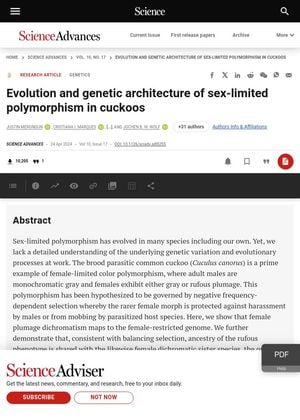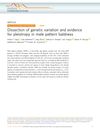Evolution And Genetic Architecture Of Sex-Limited Polymorphism In Cuckoos
April 2024
in “
Science Advances
”

TLDR Female cuckoo color differences are linked to their unique genes and help avoid male harassment.
The study investigates the genetic basis and evolutionary processes behind female-limited color polymorphism in common and oriental cuckoos, focusing on the W chromosome. Whole-genome resequencing of 22 female common cuckoos revealed significant genetic differentiation between gray and rufous morphs, linked to the W chromosome. The research supports that this polymorphism is maintained by negative frequency-dependent selection, protecting the rarer female morph from male harassment or mobbing by host species. The rufous phenotype shares ancestry with the oriental cuckoo, indicating a shared evolutionary origin. The study highlights the role of non-recombining sex chromosomes in controlling non-reproductive traits and suggests that similar genetic architectures may exist for other sex-limited traits.
